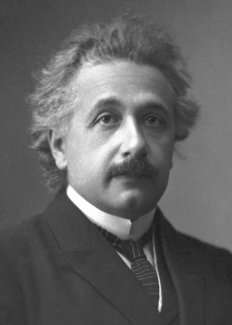 |
| Pi is the ratio of the circumference of a circle to its diameter . It now has various equivalent definitions and appears in many formulas in all areas of mathematics and physics. Image from/pixabay. |
Pi is the ratio of the circumference of a circle to its diameter . It now has various equivalent definitions and appears in many formulas in all areas of mathematics and physics. It is approximately equal to 3.14159. It has been represented by the Greek letter π since the mid-18th century, though it is spelled out as "pi". It is also called Archimedes' constant.
It can also be noted that Pi is actually an irrational number (a decimal with no end and no repeating pattern) that is most often approximated with the decimal 3.14 or the fraction
Pi Day
Pi day occurs March 14, as the day is written as 3/14 in the United States. Some serious persons celebrate the day exactly at 1:59 AM (or PM!) so they can reach the first six numbers of pi.
Pi Approximation Day
Pi Approximation Day is observed on July 22 (22/7 in the day/month format), since the fraction 22⁄7 is a common approximation of π, which is accurate to two decimal places and dates from Archimedes.
Two Pi Day
Two Pi Day, also known as Tau Day for the mathematical constant Tau, is lightly observed on June 28 (6/28 in the month/day format).
Tau Day is an annual celebration of the circle constant
History of Pi Day
Physicist Larry Shaw started Pi Day in 1988 at San Francisco's Exploratorium to celebrate the famous number and mathematics in general. There Shaw worked as a physicist, with staff and public marching around one of its circular spaces, then consuming fruit pies. The Exploratorium continues to hold Pi Day celebrations.
 |
| Larry Shaw- Image from FWD |
On March 12, 2009, the U.S. House of Representatives passed a non-binding resolution recognizing March 14, 2009 as National Pi Day.
Interestingly the entire month of March 2014 (3/14) was observed by some as Pi Month. And in the next year 2015, March 14 was celebrated as Super Pi Day. It had special significance, as the date is written as 3/14/15 in month/day/year format. At 9:26:53, the date and time together represented the first 10 digits of π.
Pi - Invention and Importance
The mathematical concept of Pi has been around for thousands of years, but it started to be known by the Greek letter only in the 1700s. Philologist William Jones began using the symbol in 1706, but it was popularized by mathematician Leonhard Euler.
Many mathematicians – from famous ones such as Fibonacci, Newton, Leibniz, and Gauss, to lesser or well-known mathematical minds – have toiled over Pi, calculated its digits, and applied it in numerous areas of mathematics. Some spent the better parts of their lives calculating just a few digits. Here is a sampling of the many milestones in the life of Pi.
Early decimal approximations for pi were obtained in a number of different ways. For example, in ancient Babylon, rope stretchers marking the locations of buildings and boundaries estimated pi to be
Archimedes, a Greek mathematician, was the first to use an algorithmic approach to calculate pi. He drew a polygon inside a circle and drew a second polygon outside of the circle. Then he continuously added more and more sides of both polygons, getting closer and closer to the shape of the circle. Having reached 96-sided polygons, he proved that
From Archimedes’ time (about 250 B.C.E.) to the modern technological advances Pi saw many developments. Pi has now been calculated to 31 trillion digits.
As William L. Schaaf once said
Probably no symbol in mathematics has evoked as much mystery, romanticism, misconception and human interest as the number pi
Some Amazing Facts about Pi
- Pi = Circumference divided by the diameter of the circle - if diameter is twisted or turned in a circuitous or spiraling manner along circumference it gives a result around 3.141592654.... times.
- The ratio Pi is same no matter how big or small the circle is.
- Pi is the most famous irrational number - a decimal that does not terminate or repeat.
- The World Record for a Computer finding the digits of Pi was made in 2013. The eight quadrillion places to the right of the decimal point!
- If we want to print 1 billion decimal value in normal font it would stretch about 2000 Km.
- Many fractions are used as approximations of Pi
- The fraction 22/7 is accurate to 0.04025%
- Another fraction 355/113 is accurate to 0.00000849%
- A more accurate fraction of Pi is 104348/33215. This is accurate to 0.00000001056%
- Both π and the letter P are the sixteenth letter in the Greek and English Alphabet respectively.
- The symbol of Pi -π has been used regularly as a mathematical constant only for the past 250 years.
- Since there are 360 degrees in a circle, some mathematicians were delighted to discover that the number 360 is at the 359th digit position of Pi.
 |
| Albert Einstein - Image from nobelprize.org |
- Albert Einstein was born on Pi Day 14th March 1879 in Ulm Wurttemberg, Germany.
 |
| Archimedes - Image from Britannica.com |
- Pi was first rigorously calculated by one of the greatest mathematicians of the ancient world Archimedes of Syracuse (287- 212 B C )
- William Jones (1675 - 1749) introduced the symbol π in the year 1706 and it was later popularized by Leonhard Euler (1707 - 1783) in 1737.
- The Feynman Point is a sequence of six nines that start at the 762nd digit in the decimal sequence of pi.
It was named after physicist Richard Feynman, who once stated during a lecture he would like to memorize the digits of π until that point, so he could recite them and quip .
We lost Richard Feynman on this day in 1988. Here is the fantastic Feynman point in Pi. http://t.co/N24SqyXx84 pic.twitter.com/BiRchFvOha— Cliff Pickover (@pickover) February 15, 2014
- Hiroyuki Goto from Tokyo. He recited 42,195 decimal places from memory at NHK Broadcasting Centre, Tokyo on 18 February 1995. This set the world record at the time, which was held for more than a decade until Lu Chao beat it in 2005. Rajveer Meena holds the record for reciting the most number of decimal places of pi. In 2015, Meena recited 70,000 decimal places blindfolded. It took him 10 hours.
Pi appears as an important constant in many mathematical equations and it is the most recognized constant in the world.
For more facts and information about pi, visit www.piday.org.
Observance
Pi day has been observed in various forms like eating pie, throwing pies. |
Strawberry pie
Photo by Reuben Mcfeeters on Unsplash
|
Other-way of doing it, discussing the significance of the number π due to pun based on the words pi and pie being homophones in English and coincidental circular shape of many pies.
Here are some ways to celebrate Pi Day Top Ten Ways to Celebrate Pi Day and 25 Best Ways to Celebrate National Pi Day
Related Article in this Blog
 |
How to Conquer Math Anxiety |
 |
The Vocabulary of Emotions |



















